January 26, 2014
A Weekend on Minmus, Part One
Good evening. ladies and Gentlekerbs. This is Jebediah Kerman, coming to you from orbit above Minmus. I'm not alone up here today, I'm mission commander for a mission with four other astronauts, so let's begin with some introductions.
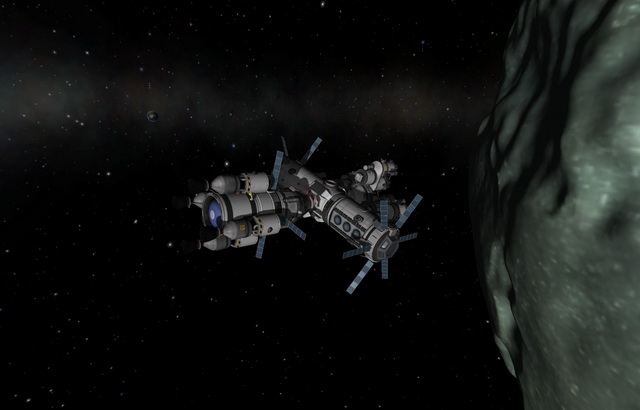
[Philmon Kerman] I was the first of us into space, launching from the Kerbal Space Center aboard The Keptune IA launcher with the mission core.
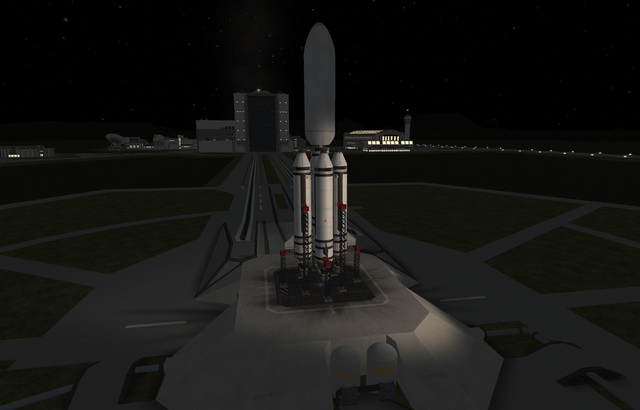
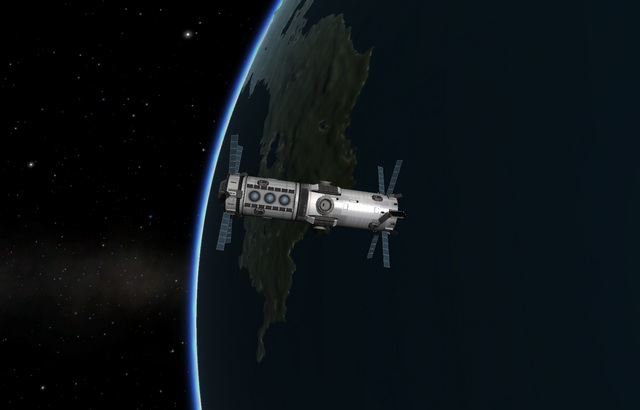
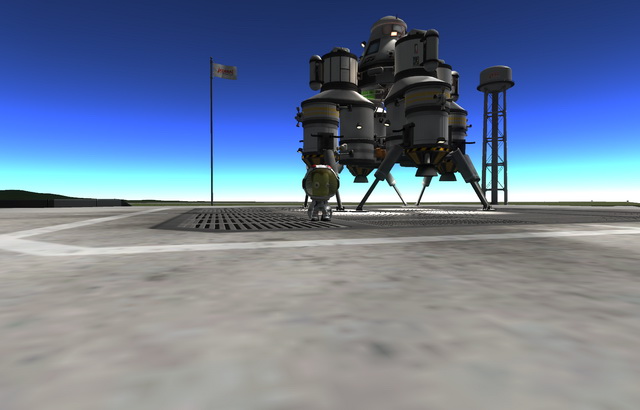
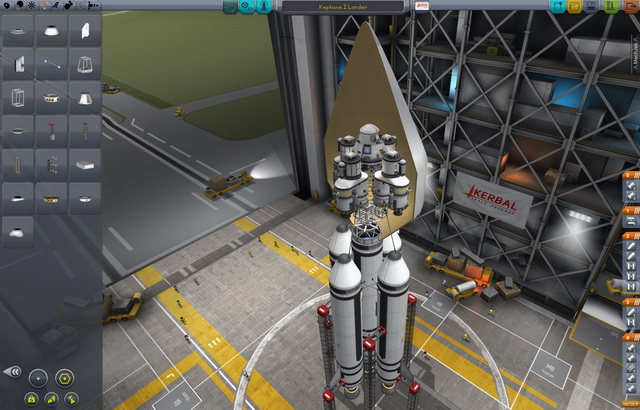
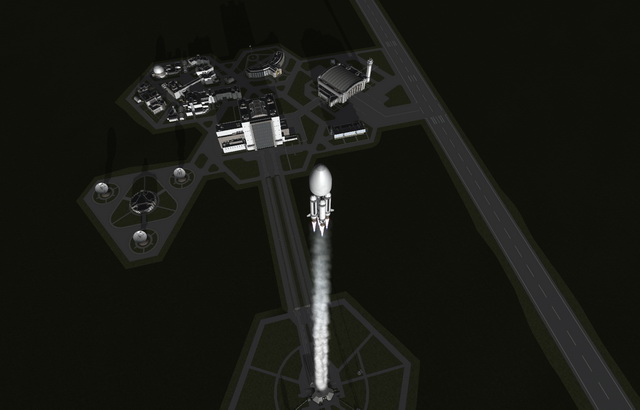
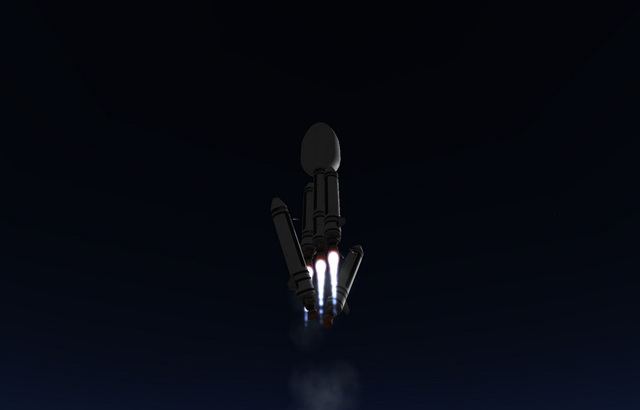
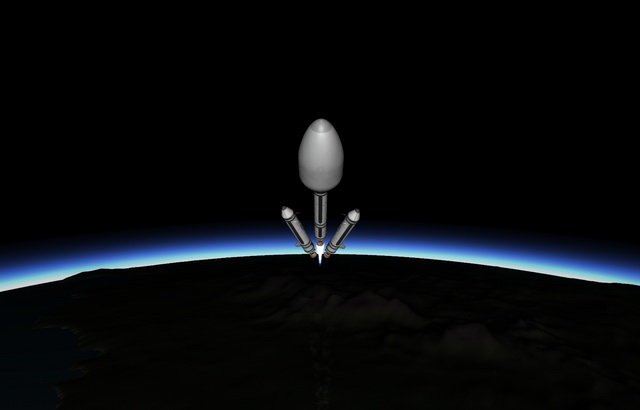
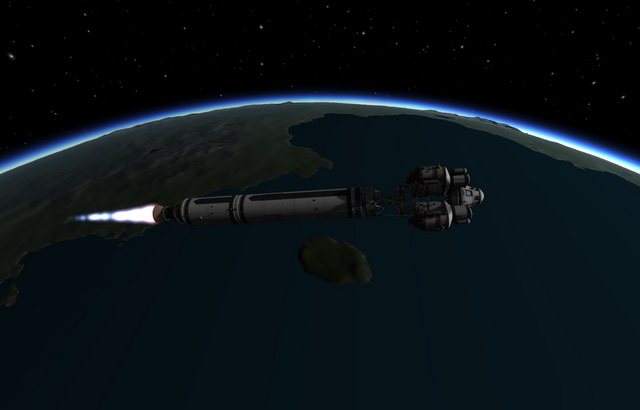
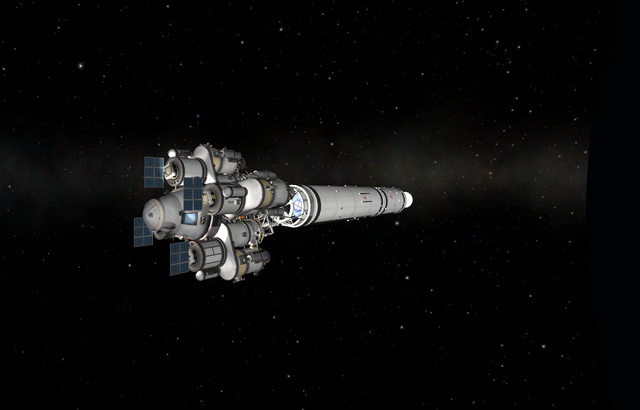
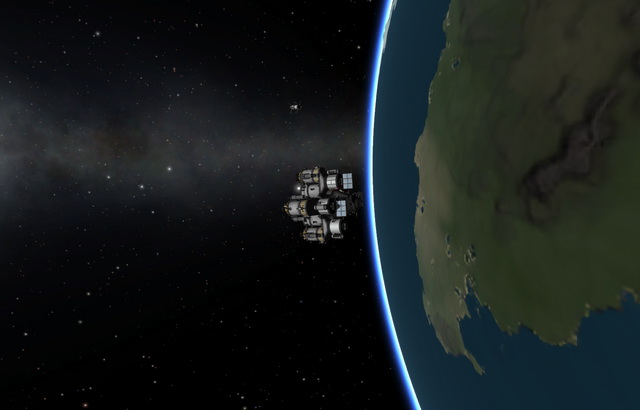
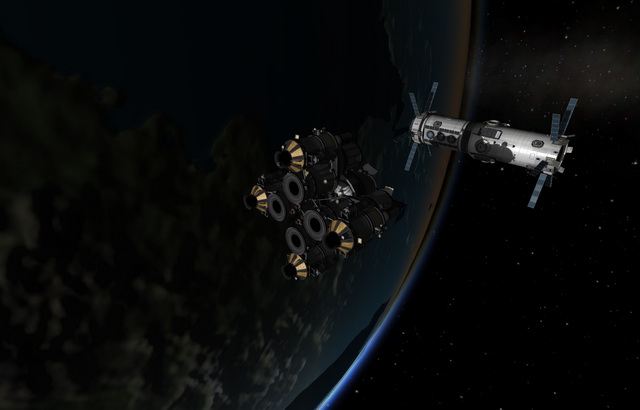
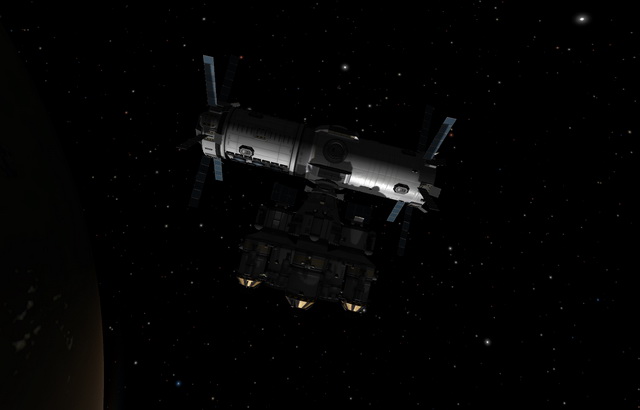
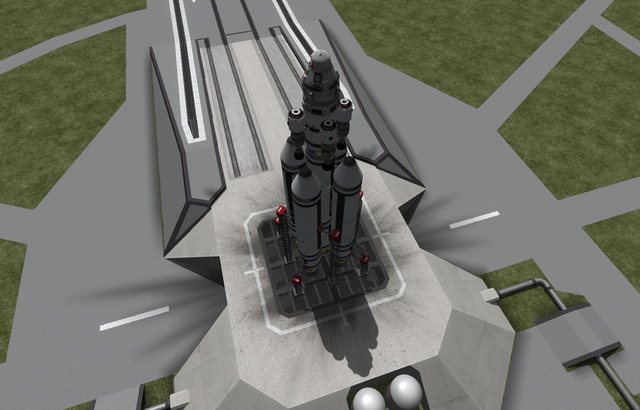
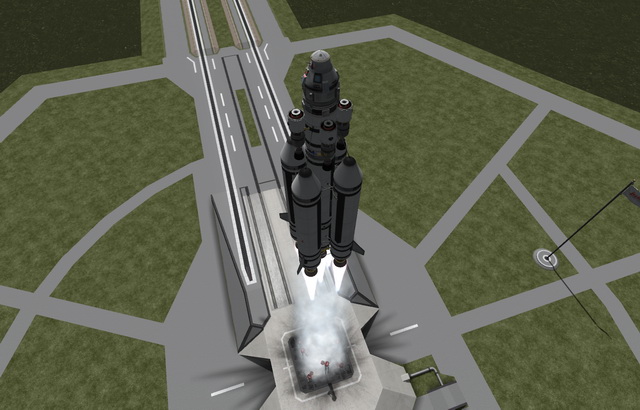
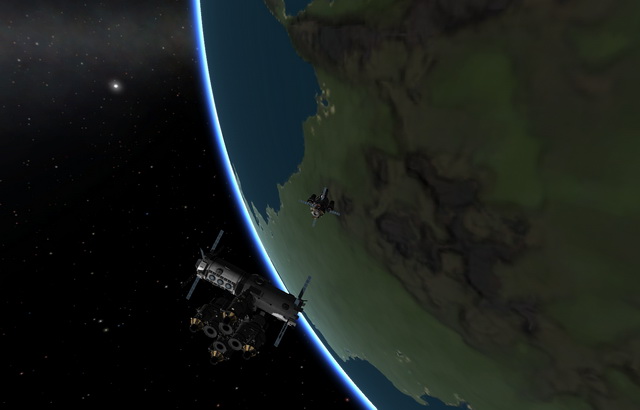
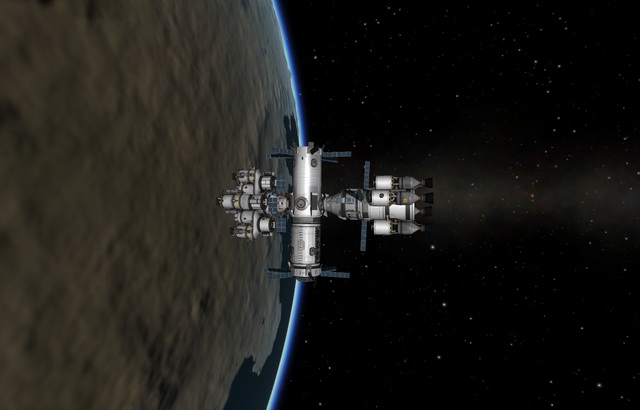
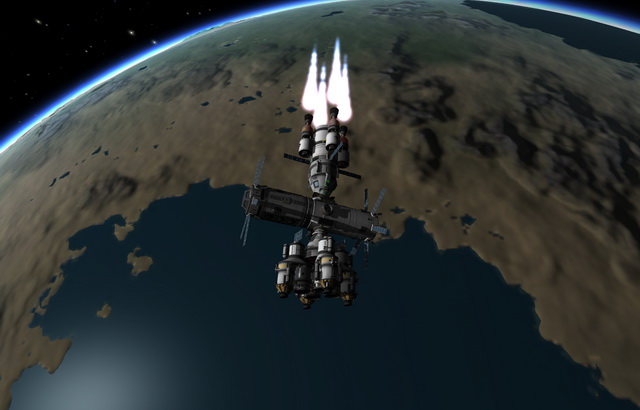

Comments are disabled.
Post is locked.
[Bob Kerman] Hello there, this is Bob Kerman. I'm pilot in charge of the lander for this mission.
[Philmon Kerman] I'm Philmon Kerman, and I'm the second pilot for the lander.
[Calfrod Kerman] I'm Calfrod Kerman. I'm a mission specialist in charge of the scientific instruments on the lander.
[Desberry Kerman] And I'm Desberry Kerman, mission specialist in charge of the research lab.
[Jebediah Kerman] Together the five of us are here above Minmus to accomplish a variety of goals:
- Gain experience with complex, long-duration missions,
- Demonstrate the feasibility of complex, multi-module spacecraft,
- Gain experience with on-orbit rendezvous and docking, and
- Thoroughly explore and research Minmus and it's local environment


The Keptune IA is a simple vehicle. At the top, we have a payload module in an aerodynamic fairing, and below that we have a typical five booster cross. This launch just has the goal of putting the mission core into a 100 kilometer Kerbin orbit, so there is no need for a large or complex rocket with multiple upper stages.
The mission core module itself is a cylindrical habitat, with living space for the mission crew, an observation deck, a research laboratory, and a fuel tank to reload the lander between visits to Minmus.

[Bob Kerman] I was next into space for the mission, with the Keptune lander. The ground crews were clearing the pad and preparing to roll out the lander launch stack before Philmon was even in orbit.

The Keptune lander has seats for three kerbals, and four copies of each of our scientific instruments. It's got way more in the way of engine than it needs for a straight landing and return from Minmus orbit, but the plan is to make a large number of trips, so we've given it enough fuel to be able to make large changes to the base orbit before it lands, so that we can reach places like the poles.

Our engineers had a bit of a challenge loading the Keptune lander onto a launch platform. I didn't particularly want to fly upside down, and there wasn't a docking port on the bottom. They came up with a cradle of support beams to support the lander, and then put an aerodynamic fairing around the whole thing. Aside from the cradle and specialized fairing, it's the same rocket that carried the mission core into orbit.

The launcher stack looks a bit funny with that massive bulb at the top, but it flies nice and straight, giving me a steady flight right off the pad.

The first stage boosters separate quite early on this stack, a mere 35 seconds into the flight, and before we begin our gravity turn. KSC has requested that we put parachutes on the next launch, these landed in the parking lot outside the VAB.

The second stage decouples much later, after the gravity turn and nearly to the end of the initial burn phase. The lander is light enough that the remaining central stage has more than enough burn to circularize the orbit quickly.

Once we're safely above the atmosphere I eject the fairing, and begin setting up an orbital rendezvous with the mission core launched earlier in the day.

The launch of the lander stack was made as the mission core was coming overhead above the KSC. The core passed overhead at 100 kilometers as I was still circularizing my orbit, so I stabilized at 90 kilometers, placing me in a faster orbit. About half an orbit later I was able to raise my orbit up to 100 kilometers for a rendezvous. A few corrective burns had me stationary with respect to the core and approximately 300 meters away. Along the way I decoupled from the launch stack, which then put itself on a course to crash into the ocean under computer guidance.

The lander probably has enough fuel and power to make a landing on Kerbin, but it's not equipped with parachutes, as it's designed for use on Minmus where they would just be extra mass. As such, I was strongly motivated to successfully rendezvous and dock with the core module. From my initial point of 300 meters, I burned directly toward the core, turning and decelerating as I came close. Orbital dynamics are kind of interesting, and burning directly towards the core doesn't actually take you there. It took three passes to bring myself stationary to the core at a distance of 45 meters and roughly lined up on the docking port.

Once I was more or less stationary from the core at that close distance, it was just a matter of slow and careful adjustments with the reaction control systems. I maintained a slow, deliberate approach, never adjusting by more than 1 meter per second, and a short while later the docking port on the nose of the lander was close enough to the port on the side of the core to begin the docking sequence. It was a slow process, but was actually pretty simple.

Once docked, I began the process of transferring fuel from the core into the tanks of the lander to top things off, while below at the KSC they were preparing the next and final launch.
[Jebediah Kerman] Thank you, Bob. With Philmon and Bob waiting for us in orbit, and Bob having worked out the rendezvous and docking process, it was time for the final launch of the mission. Calfrod, Desberry and I loaded ourselves onto the transfer vehicle that will be used to move the whole mission from Kerbin orbit to Minmus orbit and back, and prepared for launch.

The transfer vehicle is being launched by the same Keptune launch rocket as the other two stages. The vehicle itself consists of four nuclear rockets and a medium payload of fuel. Above that is a crew vehicle with five seats, lander legs, and parachutes, that will be used to bring us all back to the surface of Kerbin at the end of the mission.

The transfer vehicle is the largest and heaviest of the three launches, but only by a tiny bit, and the launch was smooth and rapid.
As with Bob's flight, we launched as the combined core and lander were nearly overhead, and caught up to them approximately one orbit later.

This docking was perhaps a bit more difficult than the one Bob made, as we had to swing around to approach from the opposite side, and the transfer vehicle was heavier and a bit harder to maneuver. But we followed the process Bob had developed for us, and soon enough we were safely docked.

With the whole mission assembled, we began preparations for our burn towards Minmus. Our first burn to match the inclination of Minmus was a bit exciting, as we hadn't considered one side effect of docking three spacecraft and linking their flight computers: our commands to the RCS systems and main engines were going to all three craft! The engines on the lander are actually more powerful than the ones on the transfer stage, and we found ourselves going backwards! We quickly aborted that first burn, and shut down the control systems on the lander and core.
At the next node, things wen't much smoother, and we made the long burn to put us on a transfer course to Minmus.

Most of a day later, we arrived at Minmus, and another burn put us in orbit 15 kilometers above the surface. We're all going to have a bit of a rest, and then Bob, Philmon, and Calfrod will descend to Minmus to begin our scientific survey.

Posted by: TheSquirrelPatrol at
09:16 PM
| No Comments
| Add Comment
Post contains 1317 words, total size 13 kb.
20kb generated in CPU 0.0062, elapsed 0.0361 seconds.
34 queries taking 0.0316 seconds, 54 records returned.
Powered by Minx 1.1.6c-pink.
34 queries taking 0.0316 seconds, 54 records returned.
Powered by Minx 1.1.6c-pink.









